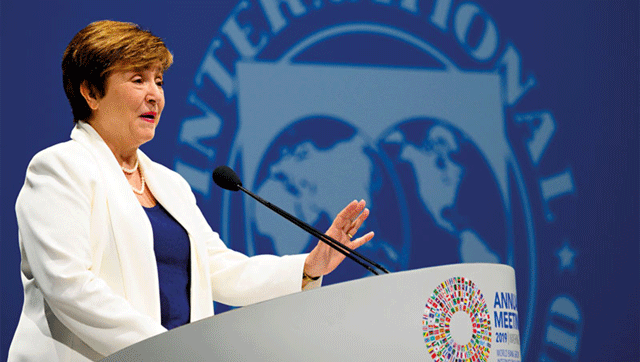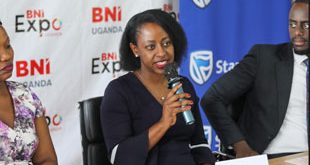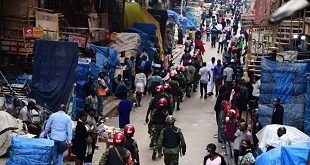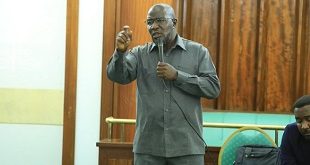
Kampala, Uganda | THE INDEPENDENT | The recent allocation of special drawing rights by the International Monetary Fund to its members has triggered fears of misuse, since the resource had been described as free, and not a loan.
Special Drawing Rights are an international reserve asset, created by the IMF to supplement its member countries’ official reserves. This kind of currency used by the IMF when dealing with member countries is currently slightly worth more than 1 US Dollar.
In a global financial crisis like under the COVID-19 pandemic, the IMF can print Special Drawing Rights and make a general allocation, meaning it will give them out freely to its member countries. The countries which are in need of money can then approach countries that are financially more stable, to secure credit facilities using the SDRs.
The total amount of SDRs released by the IMF is worth USD 650 billion, and are allocated according to the strength of capital contributions to the IMF by each member state. Unlike IMF or World Bank loans that come with conditions like interest, repayment periods and when to apply them, the SDRs are freely allocated, and the beneficiaries use them as they feel.
Uganda was allocated 346 million Special Drawing Rights worth USD 492 million (1.73 trillion Shillings), to help the country mitigate the effects of the COVID-19 pandemic. However, it will be up to Uganda or any other country to either keep the SDRs as part of their reserves or seek to cash them out and use the money to meet their priority needs.
Jane Nalunga, the Executive Director at the regional trade and tax rights group, SEATINI-Uganda calls for a public debate on the management of the credit facility to ensure transparency and protection. She adds that the government should give priority to vaccines and COVID-19 management equipment because the revival of the economy depends on the containment of the pandemic.
According to the IMF, the SDRs are being distributed to countries in proportion to their quota shares in IMF.
“This means about USD 275 billion is going to emerging and developing countries, of which low-income countries will receive about USD 21 billion, equivalent to as much as 6 per cent of GDP in some cases,” says IMF Managing Director, Kristalina Georgieva. She adds that while the decision on how best to use the SDRs rests with member countries, they should be used prudently.
“For SDRs to be deployed for the maximum benefit of member countries and the global economy, those decisions should be prudent and well-informed. The IMF is providing a framework for assessing the macro-economic implications of the new allocation, its statistical treatment and governance, and how it might affect debt sustainability,” she says.
Worried that the money could be used to repay the old debts, the debt analyst at Seatini, Ausi Kibowa says Uganda should instead take advantage of the credit relief program offered to developing countries by the G7, a group of the most developed countries.
This allows borrowers to suspend repayment of their debts and in the region, Kenya and Tanzania have already taken advantage of it. It is estimated that if Uganda applied for and secured it, it would save more than 1 trillion shillings a year, enough to meet the country’s vaccination targets, according to Kibowa.
He also urges the BoU not to add this SDR allocation to the country’s reserve but release it to the ministry of finance to fund priority areas.
However, the Ministry of Finance has urged Ugandans and the civil society in particular, to be patient as there is a process.
“They are just putting the cart before the horse. Modalities are being put in place on how the SDRs will be handled. There is actually a planned meeting with the IMF this week on how the facility should be handled. But it will go towards budget support,” says Apollo Munghinda, the Principal Communications Officer, Ministry of Finance, Planning and Economic Development.
The experts have urged the government to go for soft loans if there is a necessity for more borrowing because commercial loans are making the debt situation worse. At the Budget Conference 2022/23 last week, Minister Matia Kasaija said it was becoming more difficult to get concessional loans.
“People are not interested in giving us free money or cheap money, because the change in the global financing landscape is that people are giving less concessional money,” said Kasaija, adding that they will however continue giving priority to concessional borrowing.
The richer countries like the US and China took the lion’s share of the IMF’s SDRs, while the poorest countries got the least, based on their contribution to the Fund. This has prompted the civil society to call for reforms so that the IMF and World Bank give lending to the countries that need it more, according to Kibowa.
*****
URN
 The Independent Uganda: You get the Truth we Pay the Price
The Independent Uganda: You get the Truth we Pay the Price


